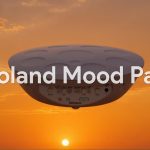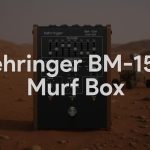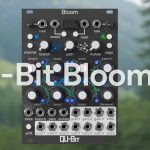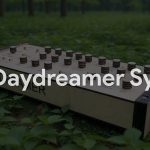The Module That Thinks Like a Patch Bay, Dreams Like an Analog Computer
Most modulation modules are content to offer a few LFOs, maybe an envelope generator, and call it comprehensive. But WORNG Electronics Quiver takes a fundamentally different approach—it’s not just a modulation source, it’s an entire analog ecosystem compressed into 14HP. This isn’t about providing more of the same; it’s about reimagining what modulation can be when every function can talk to every other function through intelligent patching.
The WORNG Electronics Quiver doesn’t just generate modulation—it cultivates it, nurtures it, and lets it evolve through the complex interactions of its 16 inputs and 18 outputs. It’s modulation as living system rather than static source, where the whole becomes dramatically more than the sum of its analog parts.
Philosophy Meets Patch Programming: The Analog Matrix Revolution
WORNG Electronics has built their reputation on modules that blur the boundaries between different synthesizer functions, and the Quiver represents their most ambitious exploration of this philosophy yet. At its heart lies a patch matrix concept that transforms traditional modulation routing from simple point-to-point connections into complex, interdependent relationships.
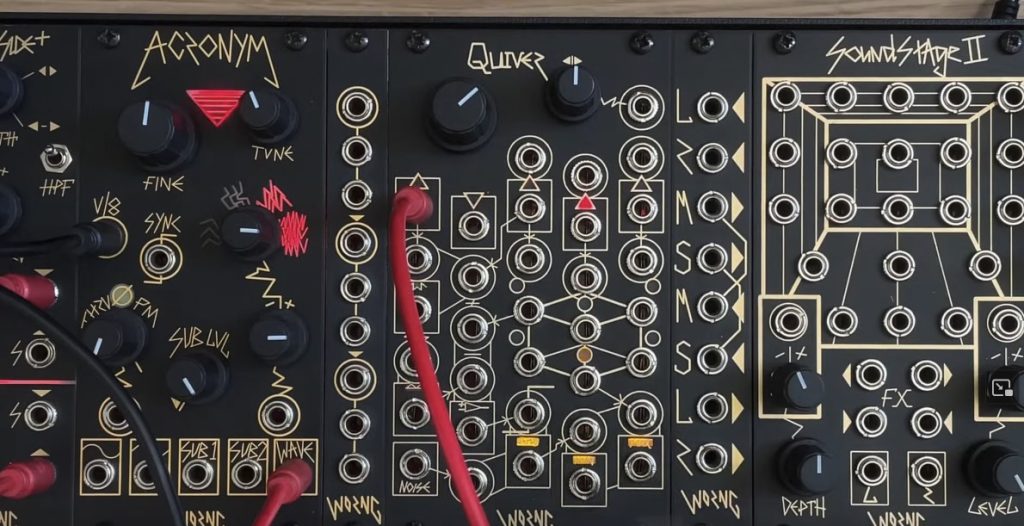
The genius lies in the normalization—when left unpatched, the module’s various processors flow seamlessly from one to the next, creating an automatically evolving modulation landscape. But patch in your own connections, and suddenly you’re programming the relationships between functions, creating custom modulation behaviors that would be impossible with traditional modules.
Four Triangle Cores: The Rhythmic Foundation
The Quiver’s foundation rests on four triangle-core LFOs, each with progressively faster base rates from left to right. This isn’t just convenient—it’s musically intelligent. The different base rates naturally create polyrhythmic relationships, where slower modulations provide harmonic movement while faster ones add textural detail.
LFO Architecture:
- Four triangle-core LFOs with individual rate controls
- Progressive base rates creating natural polyrhythmic relationships
- Individual outputs plus inverted and filtered secondary output on LFO 1
- Cross-modulation capabilities for complex FM-style interactions
- Macro control and CV input for each LFO
- LED feedback for visual monitoring of modulation activity
The cross-modulation option transforms these simple LFOs into a complex oscillator network, where each LFO can influence the others, creating the kind of organic, evolving modulation that breathes life into static patches.
Analog Processing Arsenal: Beyond Basic Modulation
Where the Quiver truly distinguishes itself is in its comprehensive collection of analog processing functions. This isn’t just about generating modulation—it’s about transforming it, shaping it, and creating new relationships between control voltages.
Core Processing Functions:
- Analog Wave Folder/Saw Phase Shifter: Transforms simple waveforms into complex harmonic structures
- Full-Wave Rectifier: Converts bipolar signals to unipolar, perfect for envelope following
- Analog Noise Source: Provides random modulation for organic variation
- Voltage Comparator: Creates gates and triggers from continuously variable sources
- Sample-and-Hold Processor: Captures and holds voltage values for stepped modulation
- Analog Min/Max Processor: Selects highest or lowest voltages for complex decision-making
Each function serves multiple roles depending on patching, creating a modular system within a module where familiar tools can be combined in unfamiliar ways.
The Modulation Cube: Vector Space in Miniature
Perhaps the most intriguing feature is the modulation cube—a three-input, six-output matrix based on WORNG’s Vector Space module circuitry. This isn’t just signal routing; it’s spatial modulation processing that treats control voltages as coordinates in three-dimensional space.
The cube concept allows for complex crossfading and mixing operations where three input sources can be combined and distributed across six outputs in ways that create smooth, continuous movement between different modulation states. It’s like having a joystick controller for your modulation sources, but one that can be automated and voltage-controlled.
Patch-Programmable Intelligence: The Normalization Advantage
The Quiver’s normalization scheme reveals WORNG’s deep understanding of how modulation actually works in practice. Left unpatched, the module provides 18 ready-to-use modulation sources that complement each other musically. But every jack becomes a decision point where you can interrupt the default flow and redirect it according to your creative vision.
This approach transforms patching from simple signal routing into genuine programming. Each patch cable becomes a conditional statement: “instead of going there, go here.” The result is a module that can be as simple or as complex as your musical needs demand.
Visual Feedback: Never in the Dark
Each output features its own LED indicator, providing constant visual feedback about voltage levels and modulation activity. In a module this complex, visual feedback becomes essential for understanding the relationships between different functions and troubleshooting unexpected behaviors.
The LED system transforms the Quiver’s front panel into a constantly shifting light show that reflects the internal modulation activity. It’s functional feedback that doubles as visual entertainment, making the module as engaging to watch as it is to hear.
External Processing: Your Entire System as Input
The Quiver’s 16 inputs aren’t just for internal connections—they’re invitations to process any voltage source in your system. Feed it envelope generators, sequencer outputs, other LFOs, or even audio signals, and the Quiver becomes a central processing hub that can transform and redistribute modulation throughout your entire setup.
This external processing capability means the Quiver doesn’t just generate modulation—it curates it, taking whatever voltage sources you provide and transforming them into more useful, more musical, more surprising control signals.
Compact Complexity: 14HP of Infinite Possibility
At 14HP, the Quiver packs an extraordinary amount of functionality into a relatively compact footprint. This isn’t just efficient use of panel space—it’s a philosophical statement about the relationship between complexity and usability. Rather than sprawling across multiple modules, the Quiver concentrates modulation power into a single, coherent interface.
The compact design encourages experimentation by making all functions immediately accessible. There’s no hunting through multiple modules or trying to remember which function lives where—everything you need for complex modulation is within reach of a single patch cable.
Analog Character: The Warmth of Real Circuits
In an era where many modulation sources are digitally generated, the Quiver’s commitment to 100% analog circuitry provides tangible sonic benefits. Analog LFOs have subtle timing variations, analog processors introduce harmonic complexity, and analog noise sources provide the kind of organic randomness that digital algorithms struggle to replicate.
This analog character becomes particularly important in complex patches where multiple modulation sources interact. Digital precision can sound sterile when multiplied across many voices, but analog variations create the kind of natural complexity that keeps electronic music feeling alive and breathing.
Pre-Order Investment: $349 for Modulation Mastery
At $349, the Quiver represents serious value for modulation-hungry modular enthusiasts. Consider the cost of acquiring four separate LFOs, multiple processors, and a modulation matrix as individual modules, and the Quiver’s pricing becomes compelling beyond its obvious convenience advantages.
The pre-order availability suggests WORNG Electronics is committed to meeting demand while maintaining their typically high build quality. Given their track record with modules like Vector Space and Sound Stage, early adoption feels less risky than usual.
The Mini Modular Within: System in a Module
The Quiver’s greatest achievement is creating what WORNG describes as “a mini modular system in itself.” This isn’t hyperbole—it’s an accurate description of a module that provides the building blocks for complete modulation architectures within a single panel.
Whether you’re building your first modular system and need comprehensive modulation in minimal space, or expanding an existing setup with sophisticated control capabilities, the Quiver offers a complete solution that grows with your needs and understanding.
The Future of Analog Modulation
The Quiver represents WORNG Electronics’ vision of where analog modulation is headed—toward systems that are simultaneously more integrated and more flexible, more intelligent and more organic. By combining patch-programmable logic with analog processing, it bridges the gap between modular flexibility and integrated convenience.
In an ecosystem where many modules do one thing very well, the Quiver does many things excellently while encouraging the kind of experimental patching that reveals new possibilities with every session.
Ready to let your modulation evolve? Visit WORNG Electronics to explore how the Quiver can transform your static control voltages into a living, breathing modulation ecosystem that never stops surprising you.
About Me
Hi, I’m Canoy Dang. I grew up in Granada and now living in Málaga, in the south of Spain. Sound has always played a central role in my life — from early home recordings to the deeper, ongoing exploration of the modular synth world. Modular, semi-modular, and desktop synthesizers have become my main tools for expression, experimentation, and sometimes, simply for getting lost in the process.



